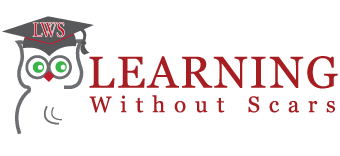Teaching and Learning
As many of you know I grew up in Montreal, Quebec, Canada. The family rented in the city of Montreal and we owned a small, old house in the Laurentians, about an hour north of Montreal. Our house was on the end of a lake and the lake was home to a Country Club where, as kids, we learned to swim, play tennis, to canoe, play golf and other summer activities. The lessons were $5.00/per month and for that price we received 12 lessons, three a week, that lasted between 30 minutes and forty-five minutes. It was a wonderful way to grow up.
However, from an early age my life was split into two pieces: the city for work and the country for play.
Fast forward to my teenage years and I became involved with teaching swimming, first to children at the lake, and then to students at University. I was very lucky to have been given these opportunities at such an early age. The teaching soon moved from teaching specific skills to allow people to learn “how to” swim to teaching people how to “teach others” to teach specific skills, such as coaching and directing athletic learning. We created a program that allowed prospective athletes to learn the necessary to teach skills of coaching and teaching. I ended up teaching aspiring teachers how to teach at the University level.
I have been involved with teaching for a long time, more than 50 years. Teaching is a very interesting discipline and I have to admit that I love to teach. I love seeing the lights go on when a student “gets it.”
I approach teaching from a number of, in my mind, critical evolutionary steps.
First is “Pictures.”
I believe in “showing” people what the goal is we are working toward. This is what we call, in our classroom work “What It Looks Like When It Is Right.” This is now part of the Building Blocks Level of parts and service management training.
Next comes Story Telling.
I move to telling stories about what it is that they just saw in the picture. A story to describe what the picture was all about. Story telling is an important aspect of nearly everything that we do. Leading people is enhanced with good stories. Selling is all about story telling. Story telling allows the listener to more easily understand what is being taught.
Pictures Again.
A repetitive process to “imprint” the end result on the mind of the student. This is what we are doing, this is how we are doing it, do you see the picture? This allows us to follow my three critical precepts in leadership and also in driving change.
- Understanding: everyone has to understand what we are doing. What are our goals and objectives?
- Acceptance: everyone has to accept that what we are doing is the right thing to do. This means that we have to be open to a vigorous debate about our goals and objectives. This is a critical element of leadership and one that is not that common. Allow everyone’s thoughts to be heard and respected.
- Commitment: Once we have these three steps completed and with strong agreement then we will have everyone committed to making it happen.
Teaching and Learning and…
That takes me to Socrates. Society has a polarity to it. There are competing views on nearly everything that we do and have done. Socrates did not want to get into the debate of what is right and wrong he simply pursued “Wisdom.” In the process he created “philosophy.”
In his approach, in much the same manner as we have created out learning offerings, he constantly was asking questions. What is a good market capture rate? How should we measure market capture? What is a good parts availability? Does that include your overnight delivery or is it right off the shelf? Lots and lots of questions. That is the foundation of how I teach and also how the Learning Without Scars.
Many people, who I respect, and have worked with over the years, say that the name of the Company is incorrect, they say it is the wrong name. The Company should be “Learning WITH Scars.” That could be one interpretation. I want people to engage in a fundamental understand on what they do. That requires thought. Remember Simon Sinek? His book “Start with Why” is truly thought provoking and enlightening.
He asks three basic questions:
- What do you do?
- How do you do it?
- Why do you do it?
The first question should be very easy to state. The second question perhaps a bit more difficult but after all that is what you do every day at work. It is the last question that is the poser. And, NO, the answer is not that you do this to make money. It is never the reason why. That is the result of doing what you do. The better you do it the more money you will receive.
The Time is NOW.
